The process of planning, designing, building, testing, and deploying a software product to carry out a specific function is known as software development. Developing a small software may appear easy, but creating enterprise-level software is very difficult. As a result, it’s crucial to use the right process when creating the software product.
The Software Development Life Cycle (SDLC) and the Software Testing Life Cycle (STLC) have importance in this case. The SDLC and STLC both interrelated. While STLC refers to a sequence of activities during software testing, SDLC refers to a sequence of activities during the software development process.
The SDLC is primarily focused on the development of software. It is for the straightforward reason that whatever you build for a client need must be tested before being deployed. Before studying how the life cycles of SDLC and STLC differ, let’s first define these two terms.
What is SDLC?
The Software Development Life Cycle (SDLC) describes all the standard phases of the software development process.
There are different phases in the SDLC life cycle, and each one has its own processes and deliverables. With the aid of the SDLC, our software applications may be created well-defined and systematic manner.
A software system that meets or exceeds client expectations should be the process’ end result. that is cost-effective to maintain and improve, accomplished within estimated timeframes, and under budget.
Phases in SDLC
The SDLC life cycle is a method for building software in the phases listed below.
•Requirements Gathering
•Planning
•Designing
•Coding
•Testing
•Deployment
•Maintenance
Why to Use SDLC?
Here are a few main reasons for using the SDLC:
- It seeks to create a top-notch software system that enables you to satisfy customer expectations.
- Every stage is completed with a formal review that offers the best management control.
- You can build extensive system documentation with the aid of SDLC.
- It generates a large number of intermediate products that may be examined to see if they can satisfy the user’s expectations and adhere to the set requirements.
- SDLC assists you in ensuring that system requirements can be traced back to specified business requirements.
- The development stages are completed one by one, which is an excellent choice for small or mid-sized projects with specific requirements.
- There are specified deliverables, entry, and exit criteria for each phase.
What is STLC?
Software Testing Life Cycle (STLC) refers to the testing process that is executed in a well-planned manner. To increase the product’s quality, a number of activities are carried out during the STLC process. STLC phases, however, solely deal with testing and error detection, not actual development.
Phases in STLC
Phases in STLC are defined differently by various companies. The general software test life cycle, however, has the following stages.
•Requirement Analysis
•Test Planning
•Test Development
•Test Environment Setup
•Test Execution
•Test Closure
Although it only relates to the testing phases, it is an important part of the SDLC. STLC phases may be repeated many times during product development until a product is considered fit for done. In a document known as the test closure, a analysis of every test performed during the software development life cycle is presented.
A detailed analysis of the fixed bugs and errors is also provided. As part of the testing process to guarantee the software is of high quality, STLC involves the testing team setting up the test environments and running test cases.
Why to Use STLC?
Here are a few main reasons for using the STLC:
- The testing procedure is made more sophisticated, reliable, and efficient with the help of STLC.
- For each stage of the project, milestones and deliverables can be included.
- Even if the model is expanded to multiple levels, it is simple to understand and implement.
- Time constraints are built in project formulation.
- Each undertaking module is tested before moving on to the next.
- The requirement of a specific project is measured against its actual result.
- The STLC makes testing more consistent, effective, and sophisticated.
- A higher-quality software release is produced during the execution phase.
- Optimizing quality control all along the SDLC.
- Removing flaws while the product is in its early and most profitable stages.
- Assuring that the product is of high quality for both the client and the users.
- Improving the quality of the development process.
Difference between Software Development Life Cycle (SDLC) and Software Testing Life Cycle (STLC)
- A testing life cycle is known as an STLC, whereas an SDLC is a development life cycle.
- While the STLC process defines various activities that improve the product’s quality, the SDLC process describes all the standard stages that are undertaken during the software development process.
- While the STLC test analyst prepares the System, Integration Test Plan, the SDLC development team creates the high-level and low-level design plans.
- In the SDLC, actual work is carried out in accordance with the design documents, whereas in the STLC, the testing team sets up the test environment and runs test cases.
- While the STLC phases solely deal with software testing, the SDLC life cycle helps a team in successfully developing the software.
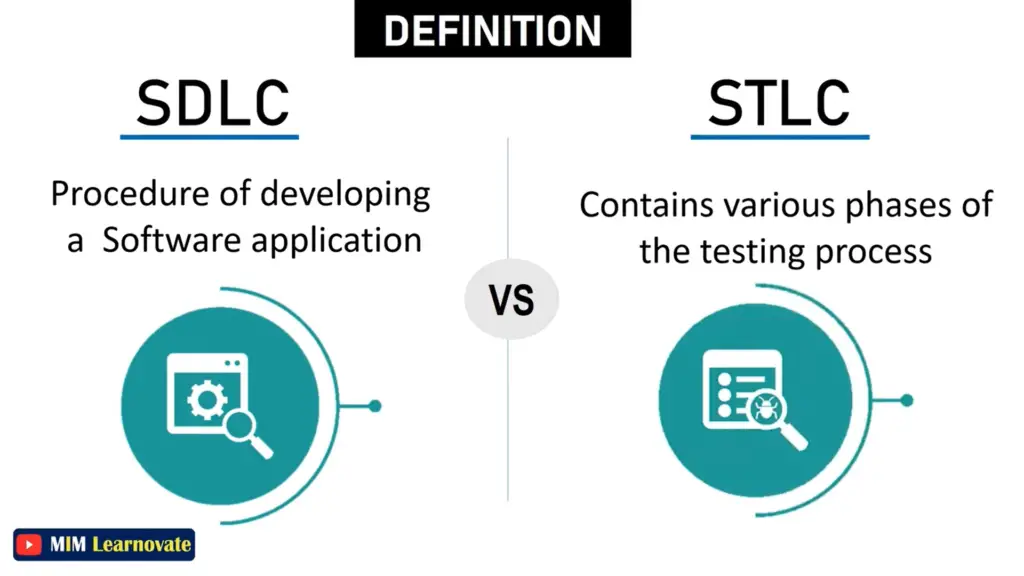
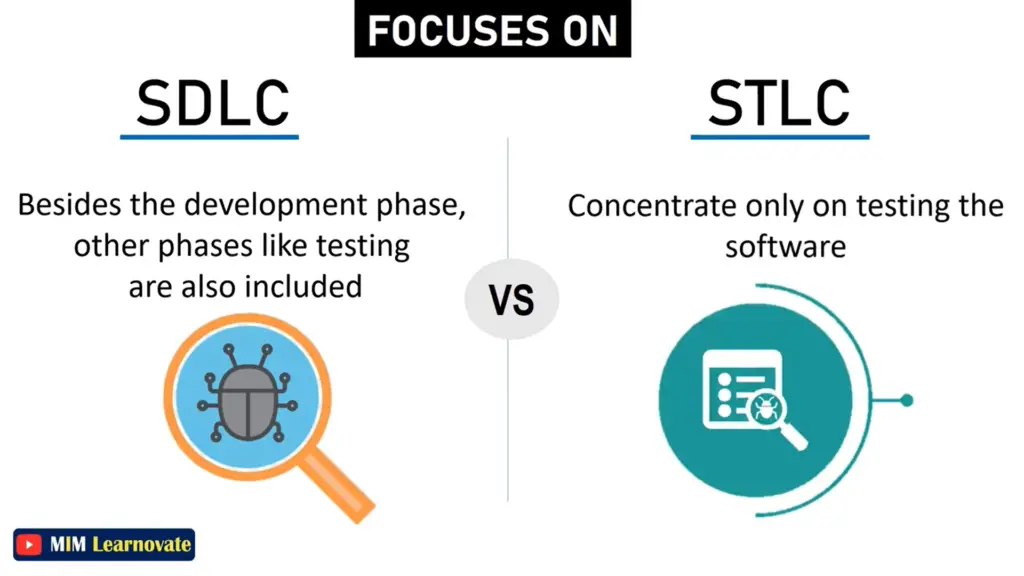
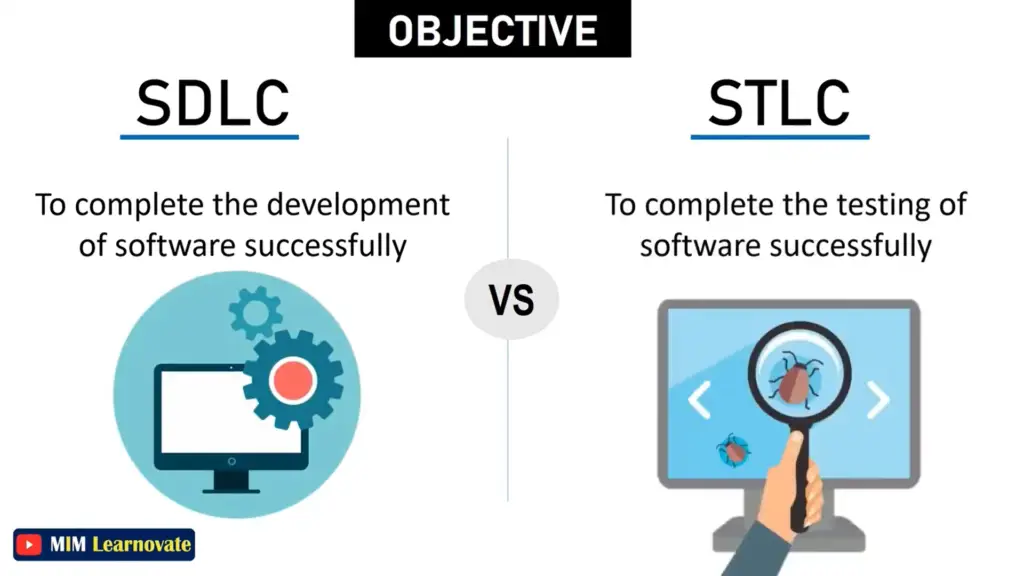
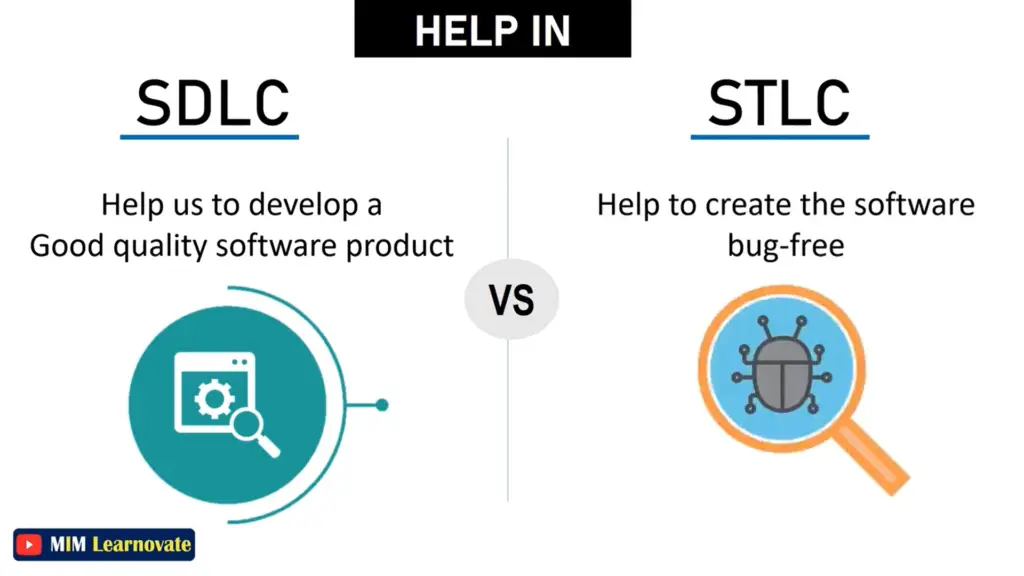
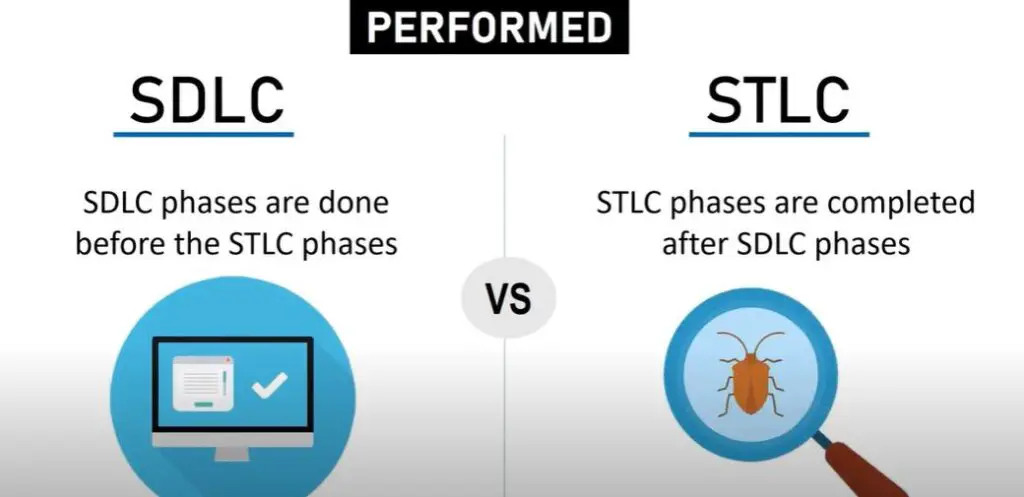


Software Development Life Cycle (SDLC) Vs Software Testing Life Cycle (STLC)
| Parameter | SDLC | STLC |
|---|---|---|
| Origin | Development Life Cycle | Testing Life Cycle |
| refers primarily to the software development process and encompasses all stages, including testing. | software testing process with multiple phases that is related to software testing. | |
| Objective | The primary goal of the SDLC life cycle is to successfully complete all phases of software development, including testing. | Testing is the only goal of the STLC phase. |
| Usage | It helps the development of good quality software. | It helps in eliminating software bugs. |
| Requirements Gathering | During the requirements gathering phase of the SDLC, business analysts and product analysts gather needs and create a development plan. | As part of the Requirement Analysis phase of the STLC, the QA (Quality Assurance) team will analyse requirement documents, such as functional and non-functional requirements, and then create a system test plan. |
| High & Low-Level Design | In SDLC, the development team creates the high and low-level design plans | In STLC, the test analyst creates the Integration Test Plan |
| Coding | To develop the system from scratch, programmers start writing code in any programming language in accordance with the designed document. | The testing team (quality assurance team) creates test cases and test scripts to validate the product’s quality. They execute the tests and set up the testing environment. |
| Environment Setup | The development team creates a test environment to validate the code as soon as it is written. | The testers make sure the test environment is set up in accordance with the requirements, and they do smoke tests to see if the environment is stable to test the product. |
| Testing Phase | This stage’s goal is to test the software. Unit, Integration, System, Retest, and Regression testing are some of the activities performed by this testing, and the development team also takes part in fixing reported bugs. | Then, using the test cases as a guide, system integration testing is carried out. All errors and bugs are identified, fixed, and retested. Regression tests are also performed on the product, and after it satisfies the exit criteria, it is approved. |
| Deployment | The software is launched in a production environment for actual end users as soon as it has been approved with the various testing teams. | .The testing team creates test reports and an analysis matrix for analysing the product after smoke testing and sanity testing are conducted in the production environment after the product has been deployed. |
| Maintenance | SDLC phase also includes post-deployment supports and updates. | Testers, execute regression suits, usually automation scripts to check maintenance code deployed. |
| Members Required | More developers are needed | less number of testers are needed |
| Outcome | The end outcome of SDLC is the creation of reusable software systems. | The end outcome of STLC is a tested software system. |
| Phases | •Requirements Gathering •Planning •Designing •Coding •Testing •Deployment •Maintenance | •Requirement Analysis •Test Planning •Test Development •Test Environment Setup •Test Execution •Test Closure |
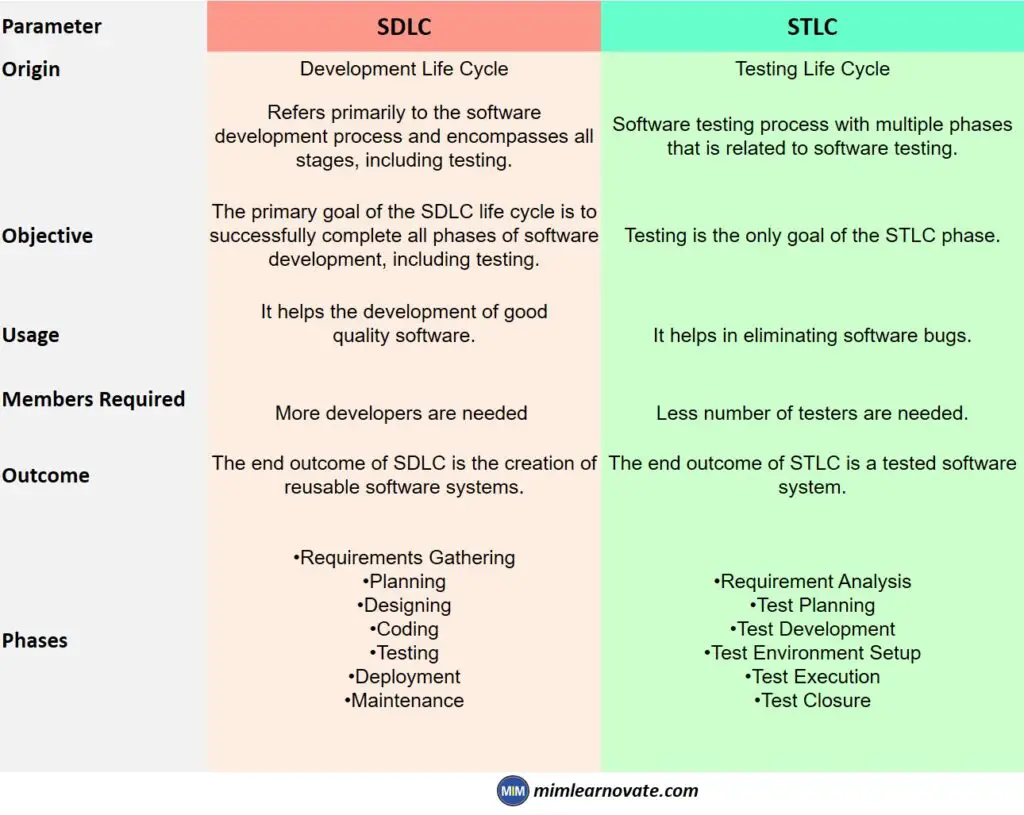
Features of SDLC
- The structure and functions of the model are properly documented, and the tested result is readily available.
- Before starting another project, the current one can be completed step by step. Project units distinct and are simple to identify.
- The model includes effective risk management, which is handled efficiently.
- It is possible to plan the project so that the components must be sourced.
Features of STLC
- System requirements gathered from clients and stakeholders are analyzed by the STLC.
- Helps to create traceability Matrix
- Identify the testing types and techniques..
- Determine which feature should be prioritized for testing.
- You can analyze the STLC Automation feasibility.
- Determine the information of the testing environment in which the actual test should be executed.
Other articles
Please read through some of our other articles with examples and explanations if you’d like to learn more.
Tools
- QuillBot
- Paraphraser.io
- Imagestotext.io
- Websites to Read Books for Free
- Tools to Convert PNG Image to Excel
- Detect AI-Generated Text using ZeroGPT and Transform It using Quillbot
- How is QuillBot used in Academic Writing?
- Tools for Presentations
- AI Tools for Citation Management
- Improve your Writing with QuillBot and ChatGPT
- Tools Transforming Knowledge Management
- Plagiarism Checkers Online
- Information Management Software
- Tools for Information Management
- Software Tools for Writing Thesis
- OpenAI WordPress Plugin
- TTS Voiceover
- Backend Automation Testing Tools
- AI Tools for Academic Research
Tech Hacks
Technology
- Types of software
- Firmware and Software
- WSN and IoT
- Flash Drive Vs Pen Drive
- Type A, B and C USB Cable
- Neuralink
- ReactJS
- Software Development Life Cycle Vs Software Testing Life Cycle
- Software Development Team vs Freelancer
- Quorum vs Hyperledger Fabric vs R3 Corda
- ChatGPT vs. Google Bard
- Quantum Apocalypse
- Synergy vs. KVM Switches
- eSourcing and eProcurement
- eProcurement and Traditional Procurement
- Over the Top and Video On Demand
- HDMI over IP vs HDBaseT
- Display Stream Compression
- Top Internet of Things Journals
- Supervised Learning vs. Unsupervised Learning
- Video Upscaling and Video Downscaling
- How To Build a Distributed System
- How to Get Into Data Science From a Non-Technical Background?
- How To Build Ethereum Mining Rig?
- How AI is Helpful For Marketers
- AI Chatbots Can Identify Trading Patterns
ChatGPT
- Paraphrase Text
- PowerPoint Slides
- Learn Languages
- Write Code in Python
- Write Literature Review
- Document Review
- Job Interview Preparation
- Prompts For Students
- Write Cover Letter
- Write Resume
- Write Code
- Job Applications
- Write SQL Queries
- Write Excel Formulas
- Academic Writing
- Translate Text
- Keyword Research
- Business Idea Generation
- Business Entrepreneur
- Use ChatGPT on WhatsApp
- Virtual Research Assistant
- Meta-Analysis in Research
- Large Documents
- Hypothesis Development
- Share ChatGPT Responses
- Text Analysis
- Upload PDF on ChatGPT
- Books ChatGPT


